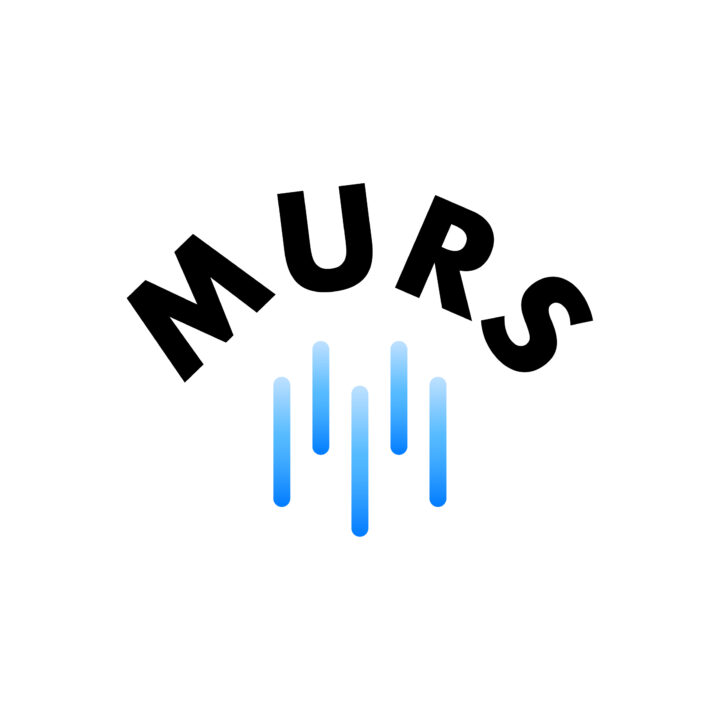

Similar articles

CHECKLIST of Apple, Google, Facebook processes
Modern corporations have abandoned management to come to leadership. Management - you hire people to set tasks for them and control the execution. Leadership - you gather people for an idea, wi...

How do I get started with the service?
In order to create a personal account in the murs.ai service you need to register here: REGISTRATION Step 1: Add a team and employees Once you are logged in to your personal account, you need t...

OKR
OKR are objectives and key results The goal is where (to what) I want to come Key results are all we need to know about how and when we plan to achieve our goal. Standard goals and metrics v...

Meetings 1: 1
Before you start, you need to register and add employees to the service: instructions Where: Catalog - category “HR and staff development” - process “Meetings 1:1” How to set up a process: A...

Peak Experience Exercise
What is a 'Peak Experience'? Peak experiences are joyful and energizing moments in someone's career that give the employee a sense of value and purpose. What are they needed for? The Peak Ex...

Meetings 1: 1
Before you start, you need to register and add employees to the service: instructions Where: Marketplace - category “HR and personnel development” - process “Meetings 1:1” link to the process H...

Рабочий лист самоуправления Morningstar
Скачать лист
News
View allWorking at Google or working at Amazon
Two of the biggest and most influential companies on the planet, Amazon and Google, are completely different when it comes to corporate culture and business strategy. Inc.com interviewed Richard Russell, who has worked for more than eight years at Google and Amazon. In this article, he...
Culture in Silicon Valley startups and companies
Instagram article with Pavel Cherkashin (venture capitalist, former top executive at Adobe...
Apple Innovation: How the company is using design thinking
How are Apple products different from their competitors? How does Apple manage to innovate...
Meetings 1: 1
Before you start, you need to register and add employees to the service: instructions ...
Would you like to be notified of new articles?
Receive news to your email

постановка целей через OKR
OKR — цели и ключевые результатыЦель в том, куда (к чему) я хочу прийтиКлючевые результаты — это все, что нам нужно знать о том, как и когда мы планируем достичь нашей цели. Стандартные цели и показатели против OKR Метрики и KPI ориентированы на прошлые показатели.OKR нацелены на результат в будущем.Управление через стандартное целеполагание = годовое управление эффективностьюУправление через OKR = непрерывное управление эффективностьюСтандартные цели и показатели против OKRЦели и основные результаты Основные принципы: Максимум 3-4 цели на команду/сотрудникаМаксимум 3-5 ключевых результатов на одну цельФормулируйте так, чтобы было понятно другим людямКлючевые результаты должны быть конкретными, измеримыми, амбициозными и в то же время в пределах зоны контроля.Формула на 3 месяцаСтавят на 1 год, в идеале на 3-4 месяца, но не на каждый месяц. Мы можем отслеживать результат каждый месяц. Контрольный список для создания OKR— в моем списке не более 5 целей— по каждой цели определяется 3-5 ключевых результатов— каждый из ключевых результатов может быть оценен в цифрах или процентах или может быть однозначно идентифицирован как достигнутый или недостигнутый результат через ответы да/нет— У меня достаточно ресурсов, навыков и возможностей для достижения ключевых результатов— В моем календаре запланирован еженедельный или раз в две недели анализ прогресса на основе зазубренных результатов.— мои OKR могут быть достигнуты за 3 месяца— по крайней мере, некоторые из моих OKR амбициозны и выводят меня из зоны комфортаАлгоритм работы с...
CHECKLIST of Apple, Google, Facebook processes
Modern corporations have abandoned management to come to leadership. Management - you hire people to set tasks for them and control the execution. Leadership - you gather people for an idea, with whom you formulate goals and, instead of monitoring execution, you are engaged in freeing the team's paths from obstacles, most often in communications with other departments. Management - puts on positions, writes instructions, where a hierarchy of positions arises. LEADERSHIP- management at the level of interest for the joint achievement of goals, in order to develop first and second, to make money, where a hierarchy of goals arises, for which leaders take responsibility In other words, the leader manages through the mission, vision, principles of the organization, so that the team within internal agreements achieves its goals I digitized the most relevant processes at the start of the transformation of organizations, turned them into a mind map, which can be downloaded from the link in my profile @malikone In fact, here are the main points: Mission, vision principles and communication processes to the teamTeam - how do we find people like us, whom do we hire, adapt?Goals - how we set goals so that they are transparent at all levelsCommunication - how we conduct daily meetings, retrospectives, what channels we use, as task books, automationDevelopment - what processes help us understand who gets the promotion for what? So that the best find development inside, and not leave to look for a place for development on the sideOne-on-one meetings - the process of meetings every two weeks between the leader and team members, in order to sort out current goals, any other questions from personal life - is carried out in a coaching...
The Self-Management Worksheet
Download...

OKR
OKR are objectives and key results The goal is where (to what) I want to come Key results are all we need to know about how and when we plan to achieve our goal. Standard goals and metrics vs OKR Metrics and KPIs focus on past performance. OKR focus on the results of the future. Management through standard goal-setting = annual performance management Management through OKR = continuous performance management Standard goals and metrics vs OKRs Objectives and Key Results Basic principles: 1. Maximum 3-4 goals per team/employee 2. Maximum 3-5 key results for one goal 3. Formulate in a way that is understandable to other people 4. Key results should be specific, measurable, ambitious, and at the same time within the control area 5. Formulate for 3 months 6. They are put for 1 year, ideally for 3-4 months, but not for every month. We can monitor the result every month. Checklist for creating OKR — there are no more than 5 goals on my list — 3-5 key results are identified for each goal — each of the key results can be assessed in number or percentage or can be unambiguously identified as an achieved or unreached result through yes / no answers — I have enough resources, skills, and capabilities to achieve key results — I have a weekly or biweekly progress analysis scheduled on my calendar based on barbed results — my OKRs can be achieved in 3 months — at least some of my OKRs are ambitious and take me out of my comfort zone Algorithm for working with...

Hiring process
Before you start, you need to register and add employees to the service: instructions Where: Catalog - category “HR and staff development” - process “Hiring. Remote interview and candidate assessment ”link to the process This process will allow the bot to independently conduct a preliminary interview with candidates, then send their responses to the team for evaluation and suggest options for further actions for the candidate. Create this process and get a link that you can send to all applicants who applied for your vacancy - using this link they will have access to the remote interview process. How to add a process: Click the “Add” button to add the process to your personal account. It will be copied to the Processes section.Click the "Go to Process" button to open its settings How to set up a process: Who will evaluate the candidate - select the employees who will evaluate the candidate after he passes the interview through the bot before the answers are sent to the decision-maker (manager, owner, HR)Candidate Evaluation Questions - Questions that the bot asks your employees to evaluate a candidate. You can edit existing questions or leave as is 3. Questions for the candidate - questions that the bot will ask the candidate. Leave existing questions or edit them 4. The decision-maker will receive the results of the candidate's survey and his assessment by other employees 5. Selecting a bot, starting date and a group for the candidate - you can leave it by default 6. Link for an invitation - you can click on it to copy and send to candidates. However, the process must be running (Run button) for the link to work How do I set up notifications about candidate replies to private messages? Open the recruitment process (tab "Processes") and click the "Notifications" button Click the "+ Add notification" icon to create a new notification, come up with a name Select an employee who will receive the interview results Check the interview questions that will be answered by this employee Click the "Add" button How do I set up notifications for candidate responses to a specific group? Create a notification and switch to the “group” tab, then press the “Find” button and follow the instructions Press the button "Check" and...

Script training
Before you start, you need to register and add employees to the service: instructions Script training is hidden from the personal account of new users. To connect them, write a request to the support service The murs.ai service has a salesperson voice training system that analyzes the manager's responses to the client at different stages of sales - for compliance with scripts (speech modules). You only need to add your scripts to the system and come up with a training script through a bot, after which you can launch this process for a sales department of any size. How to add your scripts: 1. Go to the "Scripts" tab and click on the "+" sign, in the "name" field write the name of the script stage (for example, "greeting" or "objection handling") 2. In the window that opens, click "add script text" and write a script that the manager should speak when communicating with the client. If the manager uses words in the script that should change in each dialog (for example, the manager's name), then instead of this word, several spaces or "_" characters are inserted in the script, for example, "Hello _ my name is _" How to create a training: 3. Go to the "Training" section, press the "+" sign and follow the further instructions. 4. When you reach the item "Training questions" - click on the line "new question" to edit it. This question will be received by your manager, to whom you will set up the training. Set the question type to “Audio” to receive only voice responses. After that, in the “Script:” field, be sure to select the reference script previously entered into the system that corresponds to this question. After each question, you can create the next one by entering it in the "next question" column according to the same principle, and then click "save" to make it appear. You can create very long workouts that include a series of scripting questions. In this example, the first message will contain a greeting and an invitation to click the "Yes!" to receive the following message prompting you to train your welcome script: 5. Specify the date and time for starting the workout, select the default bot, and set up notifications if you need them, after that, you can start the process - the manager will receive a notification about the workout at the time that you specified. Process algorithm: 1. When the manager receives a question from the bot that you configured, for example, "Imagine that the client said" expensive "to you, what will you answer to him?", Then he must answer using the script that you previously added to the service and associated with it a question. The task of the manager is to hold down the microphone icon and speak the script for working out this objection, as closely as possible matching the script in the system. 2. The manager's voice message is sent to the service, the voice is transcribed into text and the analysis of the correspondence of its contents with the reference script is carried out. As a result, the answer is evaluated on a scale from 10 to 100, where 100 is in full compliance with the script. 3. If there are several questions in the training that involve the answer with a voice message with the analysis for compliance with the script, then as a result the arithmetic mean of the compliance is calculated for all stages of the script that were used in the training 4. The arithmetic mean is formed into points and displayed to the manager in the form of a training report, for example: 5. Manager's voice messages, as well as the results of his training, can be sent to any employee of the company or in a separate chat, depending on how you decide to set up notifications 6. Additionally, the manager's response is analyzed for the presence of parasite words and stop words, for example, "Well ... I don't know ... damn it ..." if they are found, they are automatically included in the generated report View and listen to the results of managers' training for a specific period or specific...

Meetings 1: 1
Before you start, you need to register and add employees to the service: instructions Where: Catalog - category “HR and staff development” - process “Meetings 1:1” How to set up a process: Add a process from the catalog Choose a mentor to conduct a meeting with your menteeDialog - opens the message builder, which already contains a template for all the questions needed for this process. Click on the first message to provide the name of the employee with whom the meeting is scheduled, and also insert a link to the document in which you collectively record the arrangements for these meetings (e.g., a google docs document) Choose the date and frequency of this processYou can leave the default bot and nameNotifications can be set upStart the...

Peak Experience Exercise
What is a 'Peak Experience'? Peak experiences are joyful and energizing moments in someone's career that give the employee a sense of value and purpose. What are they needed for? The Peak Experience Exercise is a coaching tool that allows training participants to look at their own values and career experiences through introspection or self-reflection. They will then be able to assess their current situation and determine what their career path might look like. Who can host this seminar? Within the framework of the seminar, the Peak Experiences Exercise can be conducted by HR teams or managers with their teams. What is my role as a mediator? Use this guide to guide your training participants through peak experiences and help them develop their careers. Ask open-ended questions and encourage the exchange of views between participants. This will help participants discover their own values and a potential path forward. How does it work? Participants will be asked to identify 3-5 experiences in their careers when they felt they were at their "peak" and 3 experiences that they felt like failures. The most important part is thinking about your discoveries. Can the participant identify any common themes or characteristics of their experience? For example, does time matter? Do they like working in a team environment more? Have they identified specific or abstract objectives? What are peak experiences for? Peak Experiences is a coaching tool that allows training participants to self-observe or self-reflectively look at their own values and career experiences. They will then be able to assess their current situation and determine what their career path might look like. Then the participants define their core values. Participants can value everything from financial rewards to recognition. The important thing is not to judge them and to make them honest themselves. If someone is motivated by the recognition, position, and job they want, they should be able to make it happen. If they are motivated by financial rewards, they can choose a job that has a quota or bonus incentive associated with it. Finally, the practice of peak experiences forces participants to reflect on how their current role or projects meet their values and how often they reach their peak of the experience. Is there a role that naturally fits? Is there an opportunity for them to experiment multi-functionally? Download questions for conducting training on peak...

Retrospective
Before you start, you need to register and add employees to the service: instructions The process helps the team to recognize achievements, plan a new work sprint and ask ourselves the question: how can we become better? It is important to use the principles of good feedback, not to criticize, but to help colleagues and the team find solutions. Where: Catalog - Project Management category - Team retrospective How to set up a process: Add a process from the catalogSelect who will participate use a ready-made question template or make changes to any of themChoose the date and frequency of the launchSelect the name of the process and bot (you can leave the default)Set notifications (optional)Start...

How to increase employee engagement?
The world is currently experiencing a crisis of employee engagement, and the latest data show that only 13% of workers worldwide actually do their job in the workplace. The Gallup Organization, an American Institute of Public Opinion, has tracked employee engagement in the United States since 2000. In 2018, they noted that in the United States, engagement was only 34%. The remaining percentage of employees were categorized as “uninvolved”, who are generally satisfied with their place of work, but not emotionally connected with it; they just come to work, do the minimum, and leave the company quickly if they get the best deal. In Russia, in 2019, the Theory and Practice project published a study of the corporate training and development industry, during which 270 respondents from 237 Russian companies were interviewed. 30% of respondents said that for them the key challenge of the personnel market is the low involvement of their employees in achieving business goals. So why aren't employees involved, and what can organizational leaders do about it? After all, numerous surveys and studies show that employee engagement has a positive effect on a company’s bottom line and increases customer satisfaction. Here's what Gallup offers: Include involvement in your human capital development strategy Gallup research shows that fast-growing companies have clear goals for increasing employee engagement. These include broad and active management involvement, a communications strategy, dedicated systems that enable leaders and managers to obtain and use employee engagement data, and training and development of team members. The best approach to engaging staff is not just "start and finish." Engagement needs to be an ongoing process that works in parallel with your day-to-day business processes. Use science-based tools to measure the engagement Since the study of employee engagement began in the late 1990s, many have started offering their own tools to measure and measure it. Almost every employee survey, regardless of its purpose, is called an “engagement survey”. But few tools have been validated or peer-reviewed. As a result, many companies are trying to increase engagement by focusing on issues that do not affect employees in any way and, as a result, waste their time. Understand where the company is today and where it wants to be in the future Many companies aim to increase employee engagement in a month, a year, or two. But the capabilities of each company are different. On average, companies are advised to outline a 3-year roadmap. However, it all depends on the needs of the company. The main thing is that the goals are realistic and achievable. 4. Focus not on specific numbers, but on the process Some companies focus on changing the overall percentage of employees involved, ignoring tactical elements that drive productivity. Engagement is the result of specific performance management activities, such as clarifying work expectations, providing people with what they need to do their job, ensuring development, or working on positive communication with colleagues. 5. Make engagement on par with other workflows Engagement means investing in day-to-day work and incorporating the concepts of engagement into the workflow, even as the organization changes and takes new initiatives. When leaders prioritize new initiatives, managers must provide employees with new resources and enable them to do what they do best. Building a culture of engagement requires more than just completing annual employee surveys. This requires the company to take a close look at the critical elements of engagement that will align with the organization's performance and human capital strategy. Managers and leaders should always keep employee engagement in mind because every interaction with employees can affect their engagement and the effectiveness of the organization as a...